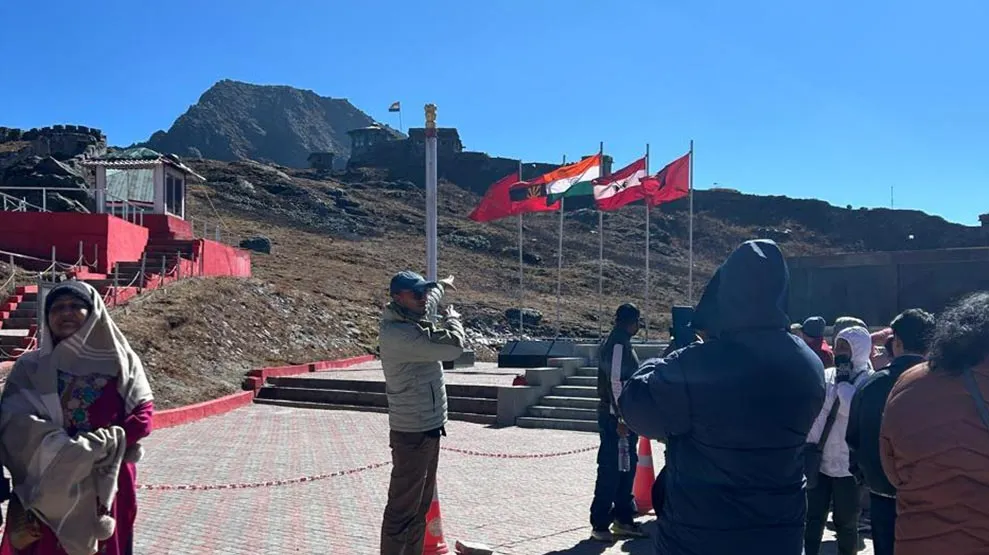
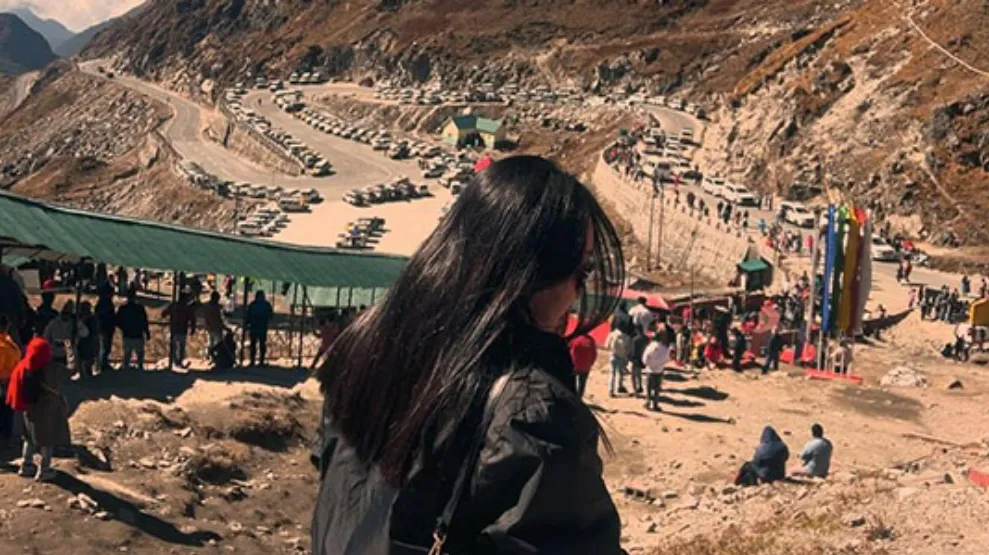
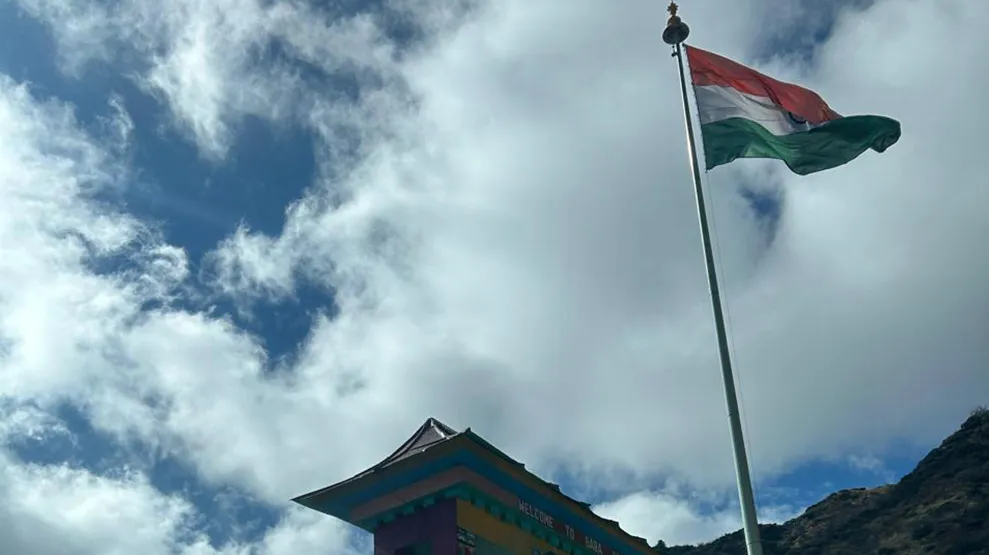
Nathula Pass is a high mountain pass in the Dongkya Range of the Himalayas between China's Yadong County in Tibet, and the Indian state of Sikkim. The pass lies at an altitude of 14000 feet above sea level and connects Gangtok with the villages and towns of the lower Chumbi Valley - a valley in the eastern Himalayas that sits between Bhutan and Sikkim. It is located around 54 kilometers east of Gangtok
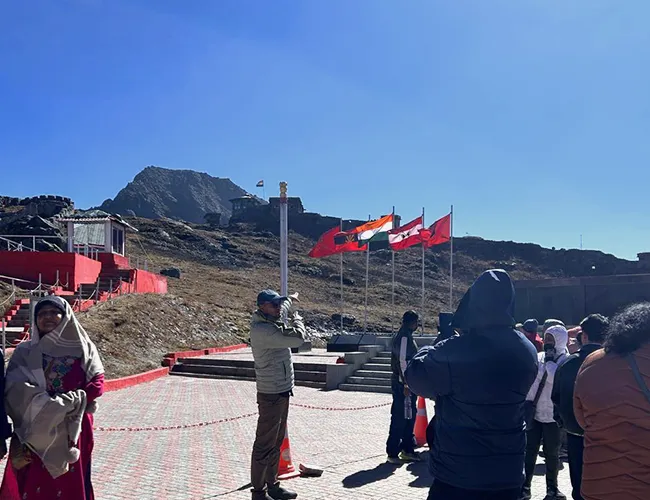
Nathu means 'listening ears' and La means 'pass'. For many visiting tourists it may come across merely as a sightseeing point and a sensitive border post. However, it is pertinent to note that it serves as one of the highest permanent military outposts in the country.
The 2nd Battalion of the Grenadiers Regiment is posted at Nathu La. The 17 Mountain Division that includes the 2 GRENADIERS defends the Nathu La Complex against any enemy aggression.
One cannot help but feel a surge of nationalism rise as you make your way deeper and deeper into the craggy mountains, miles away from the nearest civilian town ; to a steep narrow pass.
The national pride that one feels when they visit Nathula is something worth cherishing, especially when the valiant military soldiers stand guard patrolling the lines next to the CCP border personnel.
The Indian tri color fluttering magnanimously in the crisp thin air at 14000 - feet just a few meters away from the bright crimson of the People’s Republic of China flag, is a sight to behold !
Add to that the swiftly moving tufts of low hanging clouds and the constantly changing the weather conditions.
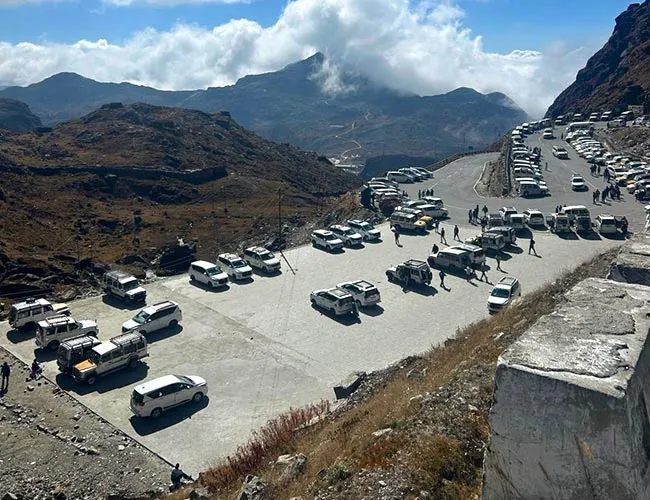
There are no permanent human settlements in the region and it is only the defense forces that live there - 12 months a year, braving the dry winds and snow, so that ordinary citizens like us can have a restful sleep every night.
Besides the few hamlets here and there around Tsomgo Lake one can come across the occasional yaks and the thick furred Icelandic horses grazing along the open valleys.
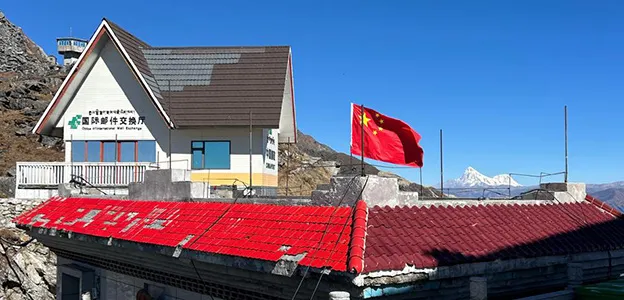
Nathu La is one of the three open trading border posts between India and China and up until 2020 before the Covid pandemic trade between the two countries was conducted at Serathang Village. Nathula also served as the starting point for the famous Kailash Mansarovar pilgrimage.
It has played a key role in the Sino-Indian Trade and has also shortened the distance between the important Buddhist and Hindu pilgrimage sites, strengthening the economy and improving border relations with China.
Best time to visit Nathula Pass-
Nathula Pass experiences heavy snowfall during the winter months. During other times the landscape is dry and desolate as the area does not receive much rainfall. Most of the vegetation here is rocky scrubs and scree. The pass is a treeless expanse of barren land due its high elevation that gradually shifts from sub tropical and temperate grasslands to dry alpine. You can sight rare orchids and rhododendrons interspersed among tall junipers and silver fir trees.
Temperatures in winter may drop down to -25 degrees Celsius. However if you want to experience snowfall, you can visit Nathula Pass in winter. From May to mid-November the average temperature ranges around 10 degrees Celsius.
There are no permanent human settlements in the region and as Indian citizens we need to bear in mind the soldiers who stay year round in the freezing cold of the Eastern Himalayas. Many times it is only due to the rescue efforts of the Indian National Army at Nathula that many lives have been saved when tourists have been suddenly trapped due to avalanches and inclement weather.
How to procure a permit for Nathula Pass -
A valid permit to visit Nathula Pass is given to only Indian Nationals. Foreign Nationals are not allowed to visit Nathula Pass due to security reasons. The permit is obtained by applying to the Tourism and Civil Aviation Department. This can be done with the help of a registered travel agency. A valid identity proof and two photographs are necessary for the same.
Please note that Nathula permits are not issued on Tuesdays because of maintenance reasons.
Nearby Attractions -
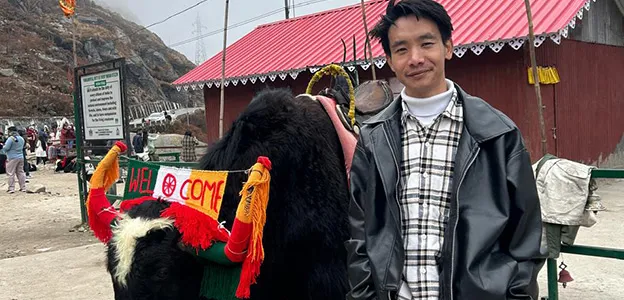
Tsomgo Lake - Tsomgo Lake or Changu lake is a glacial lake located at an altitude of 12,400 feet. Tsomgo means ‘the source of water’ in the local Bhutia language. It is around 40 km from Gangtok and the drive is full of the serene natural landscape. It is at a distance of about 2 kms from Nathula Pass and one also needs a permit to visit this sacred lake. Foreign nationals are allowed to visit up to this point however they would need special permits for the same.
The lake is revered by both Buddhists and Hindus. According to legend, the lake was formed from the tears of the Buddhist deity Guru Padmasambhava. The local people worship deities in small shrines near the lake, and prayer flags are hoisted around the lake.
During the festival of Guru Purnima, pilgrims visit the lake to perform religious rites and seek blessings. It is said that learned monks would predict the future of the kingdom by studying the lake's changing colors. If the water was dark, it was said to foretell a dark and unrestful future.
The lake's water comes from the melting snow of the surrounding mountains making it a perennial lake which never dries up.
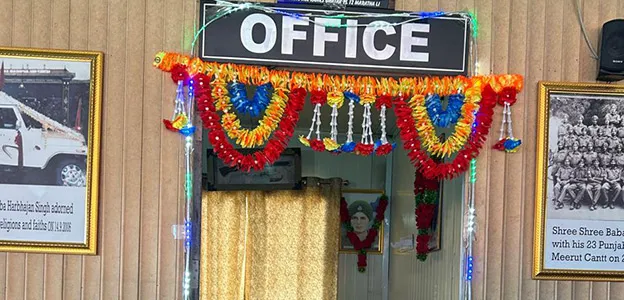
Baba Mandir - The New Baba Mandir is named after Baba Harbhajan Singh, a soldier in the Indian Army in 1946 who most likely was killed while on duty in East Sikkim in 1968.
The legend of Baba Mandir is based on the story of a soldier who appeared in a dream to tell his fellow soldiers where to find his body and requested that a samadhi be built in his memory.
He was a sepoy in the Indian Army's 23rd Punjab Regiment.To honor his request, a samadhi was built at the site of the bunker where he was posted. This is known as the Old Baba Mandir which can be visited enroute to Gnathang Valley.
A new shrine was built near Changu Lake for the convenience of tourists. This is known as the New Baba Mandir.
Sepoy Harbhajan Singh is revered by the soldiers of the Indian army as the Hero of Nathula and the Indian army built a shrine in his honor. As per local legend, the spirit of Baba Harbhajan Singh is still on duty and serves his nation by guarding Indian armies at such a high altitude region.
Tourists visiting the temple can get a chance to pray at his shrine and dedicate their wishes to him by writing it down on a note and leaving it at the temple. Just beside the shrine is his office and living room which the Indian Army still maintains on a day to day basis.
Written by Prerna
Prerna, a seasoned travel & hospitality expert, isn't just a writer – she's a curator of experiences. Leading OurGuest's operations at The Barfung Retreat, she leverages her extensive background at Taj, Hyatt, ITC, and more. A Master's graduate in English Literature, Prerna's passion for storytelling is fueled by her childhood spent traversing India with her police officer father. Fluent in Bengali, Hindi, English, and Nepali, she fosters genuine connections across cultures. Join Prerna as she unveils the hidden gems and vibrant soul of Northeast India, one captivating story at a time.
For a customized Sikkim tour experience you can contact us at +91-7669503993 or email to contact@ourguest.in




